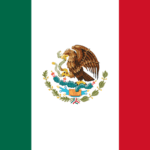Learning plurals in Spanish has become way easier than you’d think. Previously, there were two rules and several exceptions for the formation of plurals of words ending in -o. Nowadays, there is only one rule.
Learn the rule for Spanish plurals
Nouns and adjectives ending in -o will take an -s to form the plural. It’s as simple as that. This means that all the words used to name entities, or nouns, and those used to describe such entities, otherwise known as adjectives, become plural simply by adding on an -s.
Here’s an example:
Tip: Click on any of the linked sentences in this article (while on a mobile) to add them directly to your Fluent Forever app, so you can study them later. Don’t have our app yet? Download it here!
- Singular form: el círculo blanco (the white circle)
- Plural form: los círculos blancos (the white circles)

from Pixabay
Notice how the noun círculo and the adjective blanco take an -s in their plural forms cículos blancos. Remember to form the plural in both words, since these must agree in number.
Note: This plural agreement in Spanish differs from the English language, where adjectives do not take plural forms.
Now, let’s consider these sentences:
- Ella miró al número. (She looked at the number.)
- Ella miró a los números. (She looked at the numbers.)
Again, here we can see that the noun número takes an -s to form the plural números. Notice also how the article is also in the plural form los. Plural agreement between the elements of a sentence is a very important characteristic of the Spanish language, and we cannot emphasize this enough.
The following sentences will easily show how the nouns and adjectives change from singular to plural by just adding an -s at the end:
- Mi número de teléfono tiene solo un cero. (My phone number has only one zero.)
- Mi número de teléfono tiene muchos ceros. (My phone number has many zeros.)
- El marco de la fotografía está curvado. (The frame of the picture is curved.)
- Los marcos de las fotografías están curvados. (The frames of the pictures are curved.)
And that’s it: one simple rule to remember them all!
Written by Isabel Matos


















